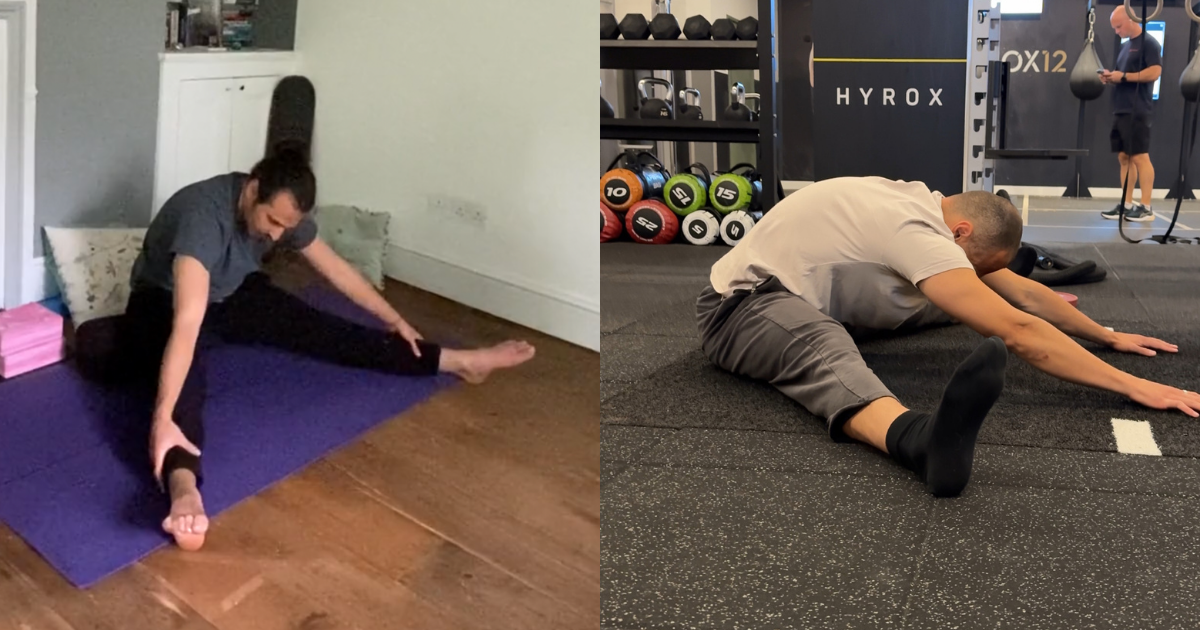Top 3 Flexibility Tips for Ankylosing Spondylitis
My Top 3 Flexibility Tips for AS (+ a Bonus Most People Miss)
This also applies to Axial Spondyloarthritis (axSpA), Spondylitis, and any other form of Spondyloarthritis.
Contents
- Introduction: Everything Is Relative
- From Poor Range of Motion to Progress — My Story
- Yoga as a Baseline, and Going Beyond
- The Principle of Non-Harm
- Why Baselines Matter (BASMI + Simple Assessments)
- Static Stretching Isn’t Always Enough
- The Power of a Structured Plan
- Bonus: Flexibility Is About the Nervous System
- Next Steps
Introduction: Everything Is Relative
When it comes to ankylosing spondylitis and movement, the most important thing to understand is this: everything is relative.
Some people may be starting from a place of radiographic progression or even spinal fusion. That naturally creates limitations. But that doesn’t mean progress isn’t possible. The real question is: where is there room for improvement?
Sometimes that means spinal mobility. Other times, it means hamstring flexibility, hip flexor mobility, or shoulder range. All of these can make us feel more functional and improve how we move through life.
I once worked with someone one-to-one who had full spinal fusion. Over a year, even though his spine didn’t change, his posture did. By improving his shoulders, hamstrings, and pelvic stability, he stood taller and felt more confident. Progress is always relative, but progress is possible.
From Poor Range of Motion to Progress — My Story
When I was first diagnosed, my range of movement was not good. I was incredibly stiff, and even basic movements felt limited.
Below are a few photos of me from around that time compared to more recent ones.


I share this not to suggest everyone should aim for “crazy ranges of motion,” but to show what might be possible. My goal has always been to represent potential — while reminding everyone that the most important thing is to have enough range of motion to enjoy life and the things that matter most to you.
Yoga as a Baseline, and Going Beyond
Yoga was my first real tool for managing stiffness and improving flexibility. It gave me a strong baseline, taught me body awareness, and helped me reconnect with movement.
But what really changed things for me was combining yoga with other forms of flexibility training. When I started learning about methods like dynamic, active, and loaded stretching, everything compounded. My progress accelerated in a safe, structured way.
The Principle of Non-Harm
My Top 3 Flexibility Tips for Ankylosing Spondylitis
Tip 1: Why Baselines Matter (BASMI + Simple Assessments)
Tip 2: Static Stretching Isn’t Always Enough
Tip 3: The Power of a Structured Plan
Bonus: Flexibility Is About the Nervous System
Next Steps
Live Online Classes (4 per week) — your first class is free
Virtual Library — mostly static stretching, but a great way to build a base
Personalised Flexibility Programme — the most powerful way to make lasting progress
So that’s the roadmap: understand everything is relative, find your baseline, mix your methods, follow a structured plan, and remember — your nervous system is the gatekeeper.
Movement really is medicine 💪


